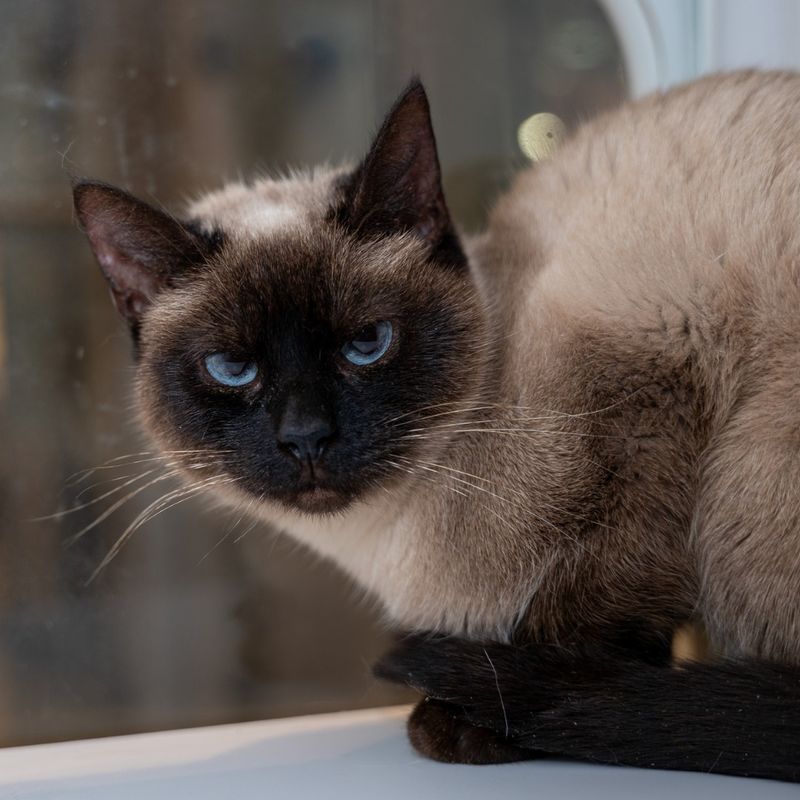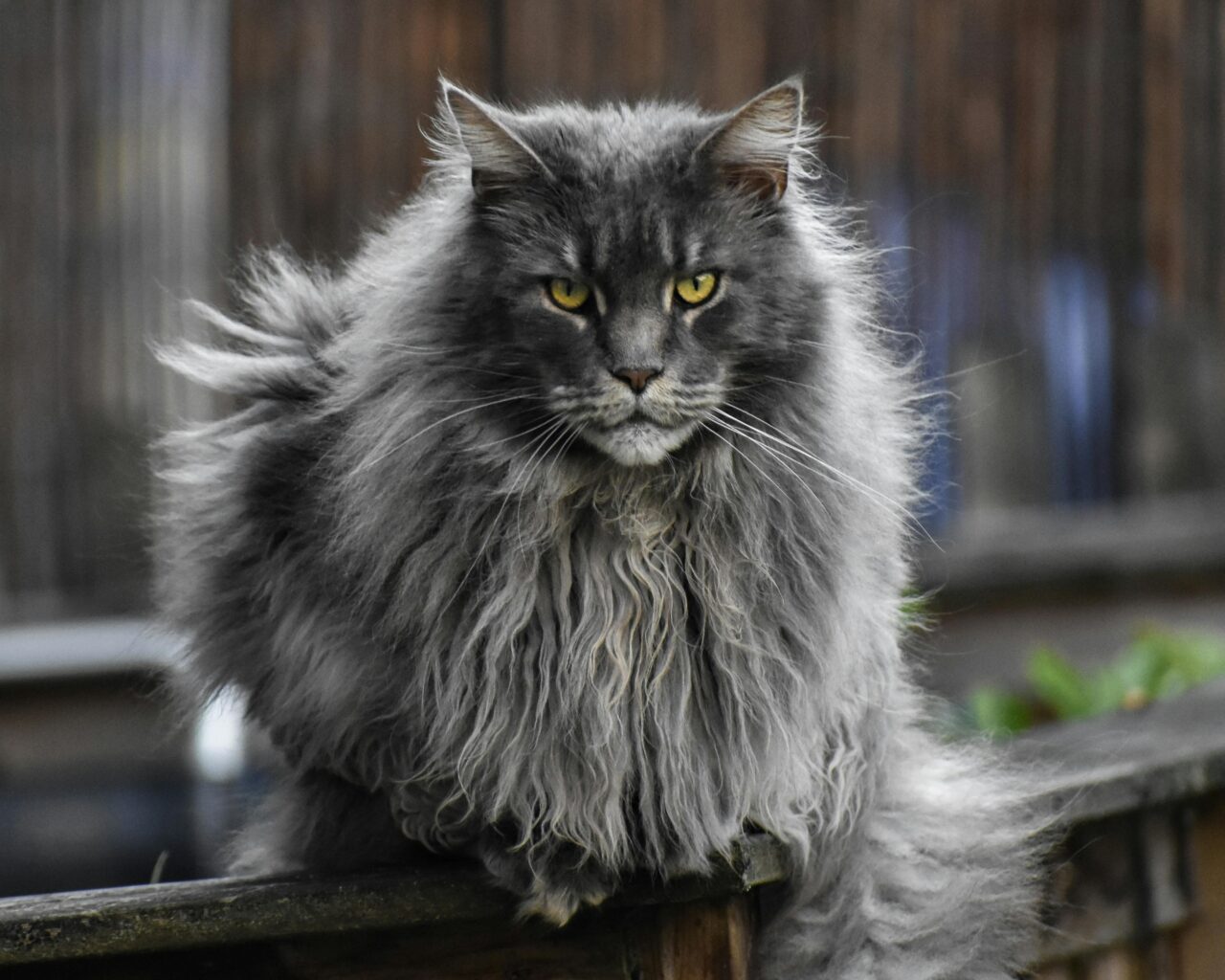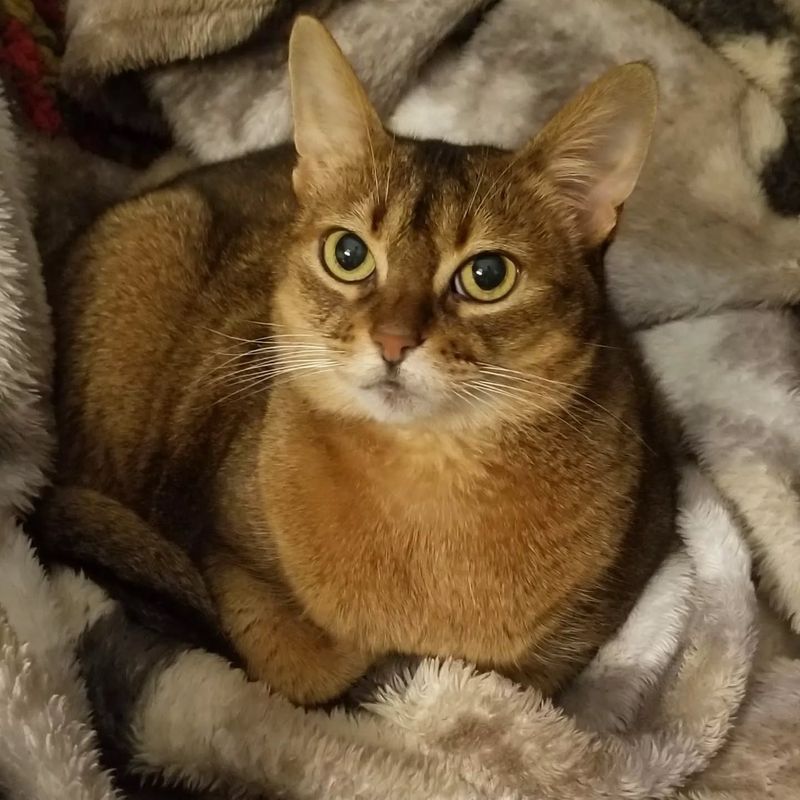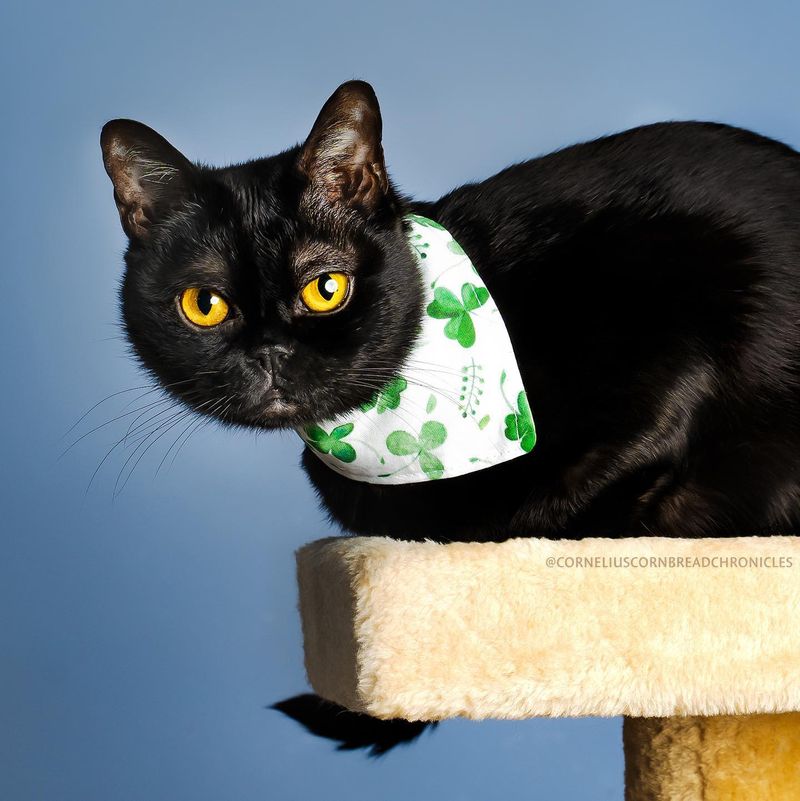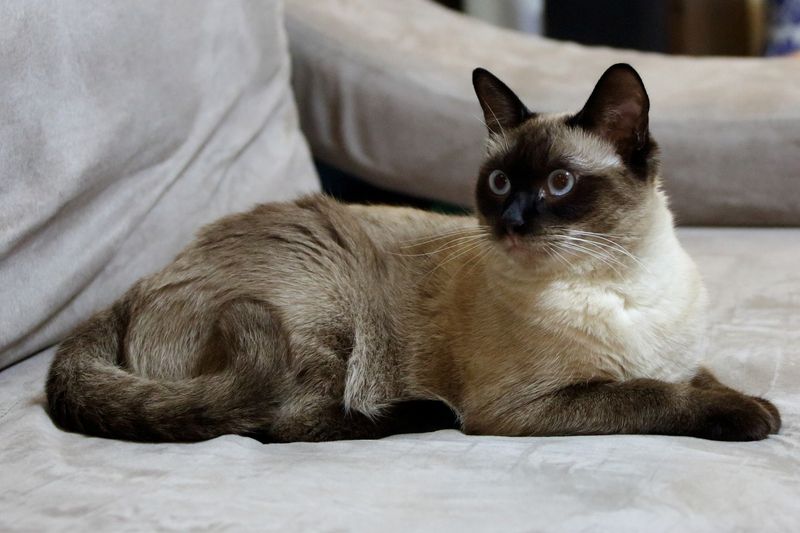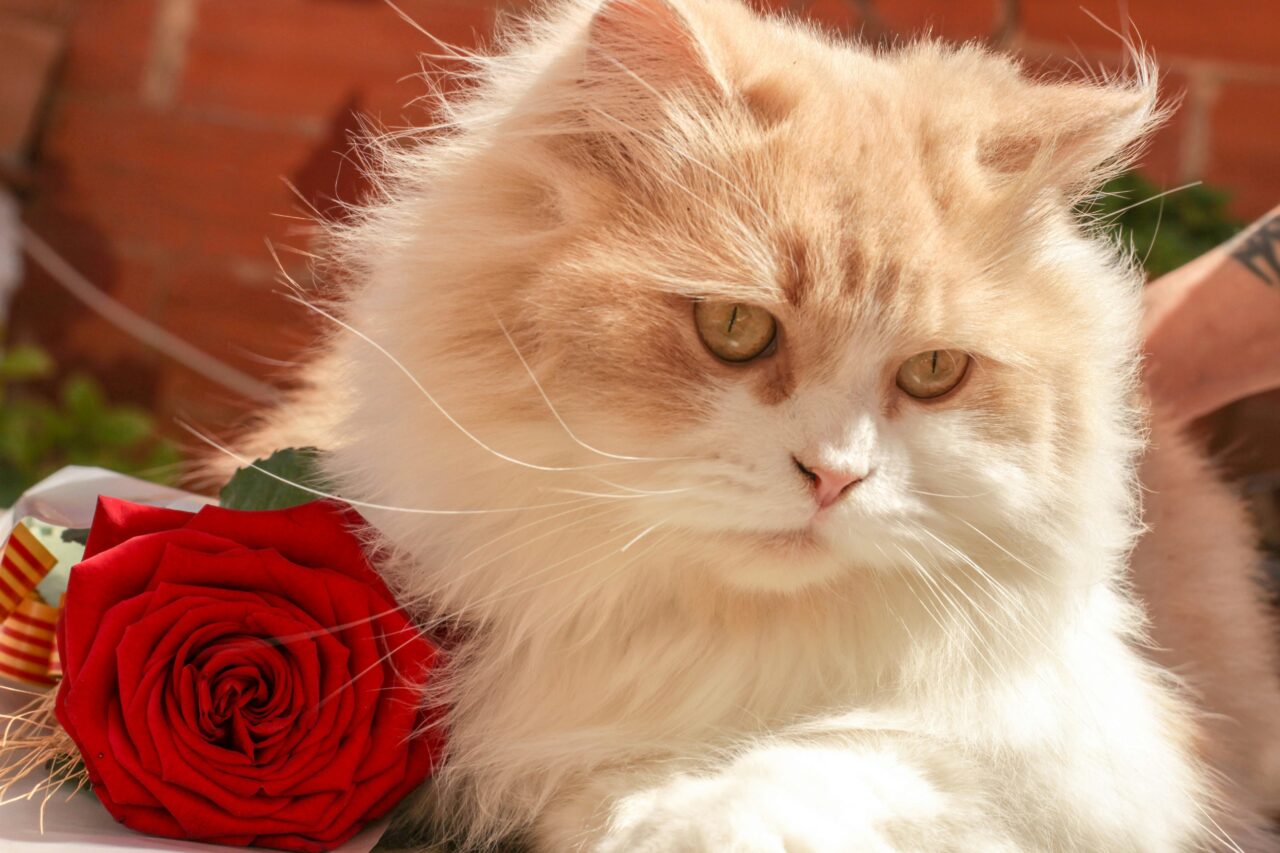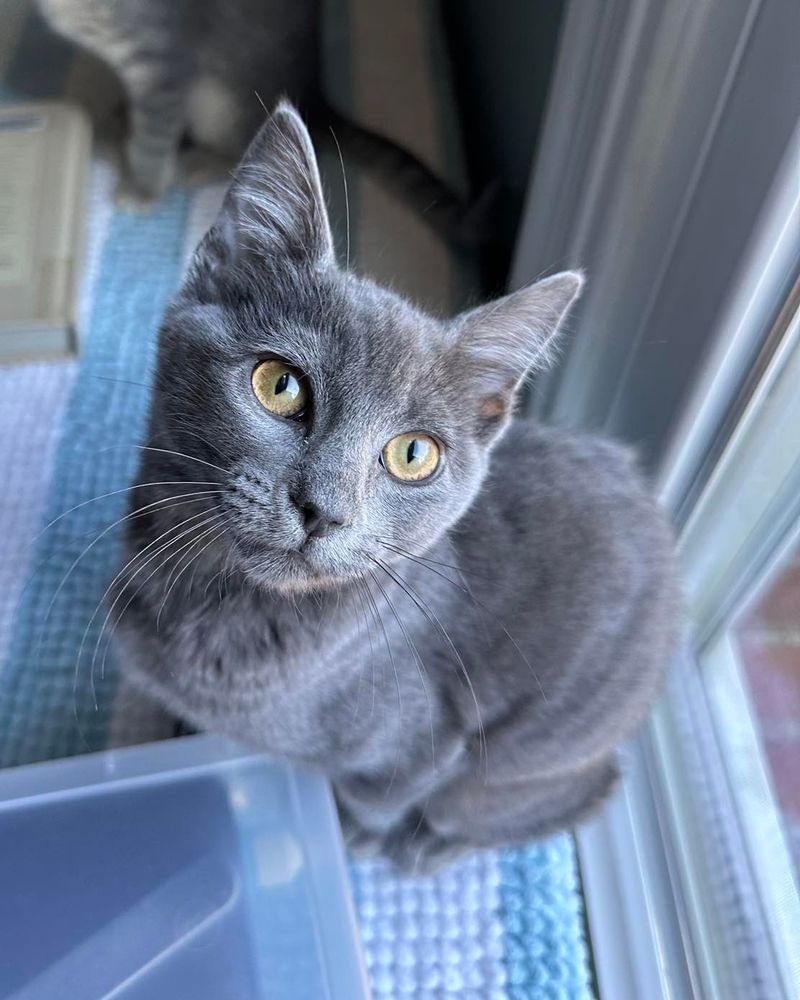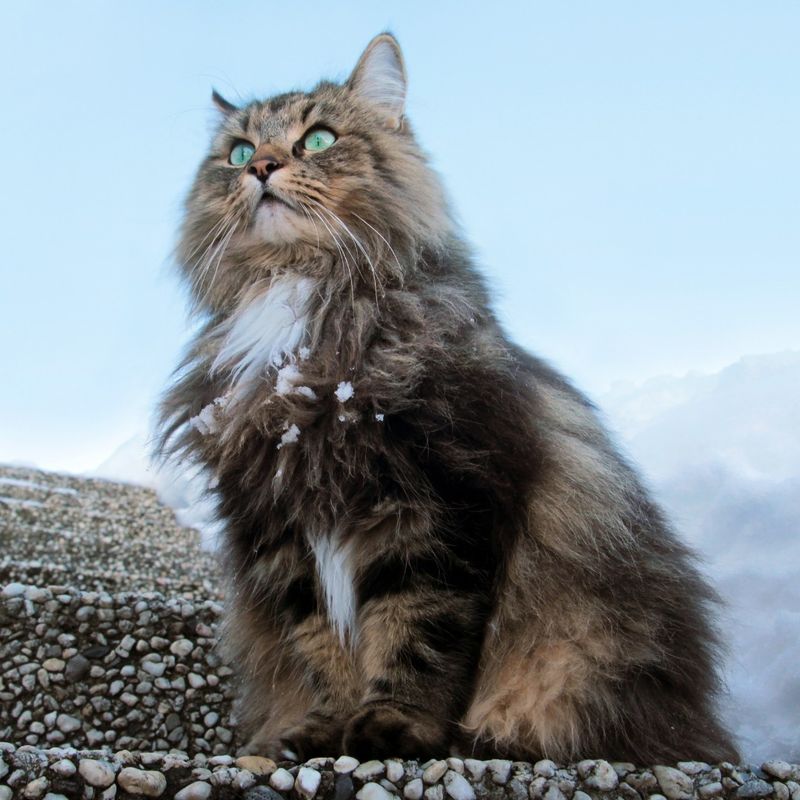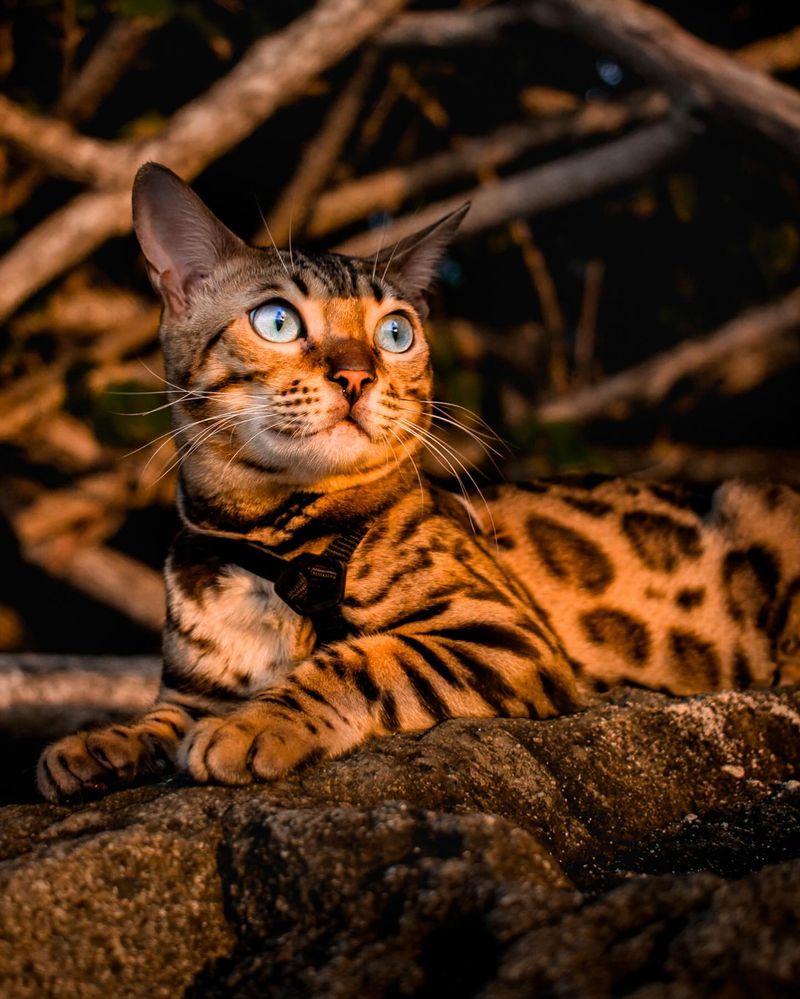📖 Table of Content:
- 1. Ragdoll: The Ultimate Lap Cat
- 2. Siamese: Vocal Velcro Companions
- 3. Maine Coon: Gentle Giants Who Love Their People
- 4. Abyssinian: Playful Partners In Crime
- 5. Bombay: The Shadow Cat Who Adores You
- 6. Sphynx: Skin-to-Skin Snugglers
- 7. Burmese: The Ultimate People-Oriented Cat
- 8. Persian: Independent Beauty Queens
- 9. Russian Blue: Reserved Roommates
- 10. Norwegian Forest Cat: Independent Forest Dwellers
- 11. Bengal: Wild Spirits Need Feline Friends
- 12. Turkish Van: Water-Loving Independents
Cats have a reputation for being independent, but some breeds crave human attention while others prefer feline friendship. Understanding these natural tendencies can help you choose the perfect cat for your lifestyle and expectations.
Whether you’re looking for a lap cat who follows you everywhere or a more independent kitty who’s happy with occasional petting, this guide reveals which breeds typically form the strongest bonds with humans and which ones might prefer hanging out with other cats instead.
1. Ragdoll: The Ultimate Lap Cat
Nicknamed “puppy cats” for good reason, Ragdolls are famous for their desire to be wherever their humans are. These blue-eyed beauties will follow you from room to room and flop into your lap at every opportunity.
Their trademark move? Going completely limp when picked up—hence their name! Ragdolls rarely meet a human they don’t like and typically greet visitors with the same affection they show their owners.
Unlike many cats, Ragdolls often enjoy being held and carried around. Their patient, easygoing temperament makes them excellent companions for families with children or other pets.
2. Siamese: Vocal Velcro Companions
Siamese cats bond so intensely with their people that separation anxiety can be a real concern. These chatty felines will tell you exactly what they’re thinking with their distinctive meows and won’t hesitate to demand your attention when they feel ignored.
Intelligence radiates from their striking blue almond-shaped eyes. Siamese cats quickly learn routines and may wait by the door when they know you’re due home from work.
Many Siamese owners describe having conversations with their cats, as these social butterflies respond to human speech with their own complex vocalizations. They thrive on interaction and mental stimulation from their favorite humans.
3. Maine Coon: Gentle Giants Who Love Their People
Maine Coons combine the best of both worlds—they form deep bonds with humans while maintaining a refreshing sense of independence. These enormous felines (sometimes weighing over 20 pounds) are known as “gentle giants” in the cat world.
Unlike clingy breeds, Maine Coons show affection on their terms. They’ll happily join family activities, supervising from a nearby perch or helping with household tasks in their own cat way.
Their social intelligence shines through in how they adapt to household routines. Maine Coons often greet family members at the door, sleep next to (not necessarily on) their humans, and play fetch like dogs—all while maintaining their dignified cat nature.
4. Abyssinian: Playful Partners In Crime
Abyssinians form bonds through shared activities rather than cuddles. These energetic cats with ticked coats prefer interactive play with their humans over long petting sessions.
Their curious nature means they’ll investigate everything you do. Cooking dinner? Your Abyssinian will supervise from the counter. Working at your desk? They’ll helpfully sit on your keyboard. Taking a shower? Don’t be surprised to see paws reaching under the curtain!
While not typically lap cats, Abyssinians show affection by staying nearby and including you in their adventures. Their loyalty manifests as a desire to participate in your life, making them perfect companions for active households.
5. Bombay: The Shadow Cat Who Adores You
With their glossy black coats and golden eyes, Bombays are often described as “mini panthers” with the heart of a teddy bear. These striking cats form extraordinarily strong attachments to their chosen people and may pick one family member as their special human.
Bombays love body contact and warmth. They’ll curl up under blankets, snuggle against your neck, or drape themselves across your lap whenever possible.
Despite their sleek, muscular appearance, these cats have surprisingly gentle and adaptable personalities. Bombays typically welcome strangers with curiosity rather than fear and adjust well to household changes, as long as their beloved humans remain constant.
6. Sphynx: Skin-to-Skin Snugglers
The hairless Sphynx isn’t just seeking warmth when it cuddles—these cats genuinely crave human connection. Their lack of fur creates a unique bonding experience as they press their warm skin directly against yours.
Sphynx cats greet their owners with enthusiastic head-butts and will climb onto any available shoulder for transportation. Their extroverted personalities make them natural entertainers who perform antics to make their humans laugh.
Behind their wrinkled appearance lies a deeply affectionate heart. A Sphynx will wrap itself around your neck like a living scarf or burrow under blankets with you, maintaining physical contact whenever possible.
7. Burmese: The Ultimate People-Oriented Cat
Burmese cats believe they’re equal members of the family and act accordingly. Their golden eyes follow you with undisguised adoration, and they’ll leap into your arms without invitation, confident of their welcome.
Originally descended from a single cat named Wong Mau, modern Burmese inherit her people-loving legacy. They adapt their schedules to yours and hate being left alone for long periods.
These cats maintain their playful kitten-like behavior well into adulthood. A Burmese will happily learn tricks, play fetch, or participate in any activity that involves spending time with their beloved humans—making them perfect for someone wanting a deeply interactive feline relationship.
8. Persian: Independent Beauty Queens
Persians appreciate humans from a dignified distance. These aristocratic felines with pushed-in faces and flowing coats prefer observing household activities from comfortable perches rather than participating directly.
Their affection style leans toward quiet companionship. A Persian might sit near you without demanding constant interaction, content to share space rather than demand attention.
While they form strong attachments to their families, Persians typically bond more with environments than individuals. They value predictable routines and familiar surroundings, often becoming visibly stressed by household changes or new people. Many Persians form closer connections with fellow cats who respect their personal space.
9. Russian Blue: Reserved Roommates
Russian Blues embody the classic cat stereotype—beautiful but aloof. Their shimmering silver-blue coats and emerald eyes catch everyone’s attention, but these cats reserve their affection for a select few humans, if any.
Extremely sensitive to household energy, Russian Blues often disappear when visitors arrive. They prefer watching social gatherings from safe hiding spots rather than participating.
Their natural shyness makes them excellent companions for other cats. Russian Blues frequently form strong bonds with feline housemates, grooming them and sleeping curled together, while maintaining polite but distant relationships with their human caretakers.
10. Norwegian Forest Cat: Independent Forest Dwellers
Norwegian Forest Cats bring their wild heritage into domestic life. With massive paws, tufted ears, and thick water-resistant coats, these natural athletes were bred to survive harsh Scandinavian winters without human assistance.
While friendly and good-natured, “Wegies” maintain an independent streak. They’ll happily share their living space with humans but prefer the company of fellow cats for play and social bonding.
Their self-sufficient nature means they don’t seek constant attention or reassurance from people. Norwegian Forest Cats appreciate having feline companions who understand their need for climbing, hunting games, and occasional solitude—behaviors deeply ingrained from their forest-dwelling ancestors.
11. Bengal: Wild Spirits Need Feline Friends
Bengals retain much of their Asian leopard cat ancestor’s independent nature. Their spotted or marbled coats hide boundless energy that’s often too intense for human-only interaction.
These athletic cats need climbing opportunities, running space, and interactive play that mimics hunting. Without sufficient stimulation, Bengals can become destructive or develop behavior problems.
Many Bengal owners discover their exotic pets thrive with feline companions who match their energy level. Two Bengals will entertain each other with wrestling matches, climbing competitions, and chattering at birds together, forming tight bonds while requiring less direct human entertainment.
12. Turkish Van: Water-Loving Independents
Known as the “swimming cats,” Turkish Vans stand out for their unusual love of water and their strongly independent nature. Their distinctive white bodies with colored heads and tails (the “van” pattern) make them instantly recognizable.
These cats form their primary social bonds with other felines rather than humans. In multi-cat households, Turkish Vans establish clear hierarchies and complex relationships with their feline companions.
While they acknowledge their human caretakers, Turkish Vans rarely seek attention or physical affection from people. Their self-assured temperament makes them excellent cats for busy households where constant interaction isn’t possible, especially when they have other cats for companionship.


